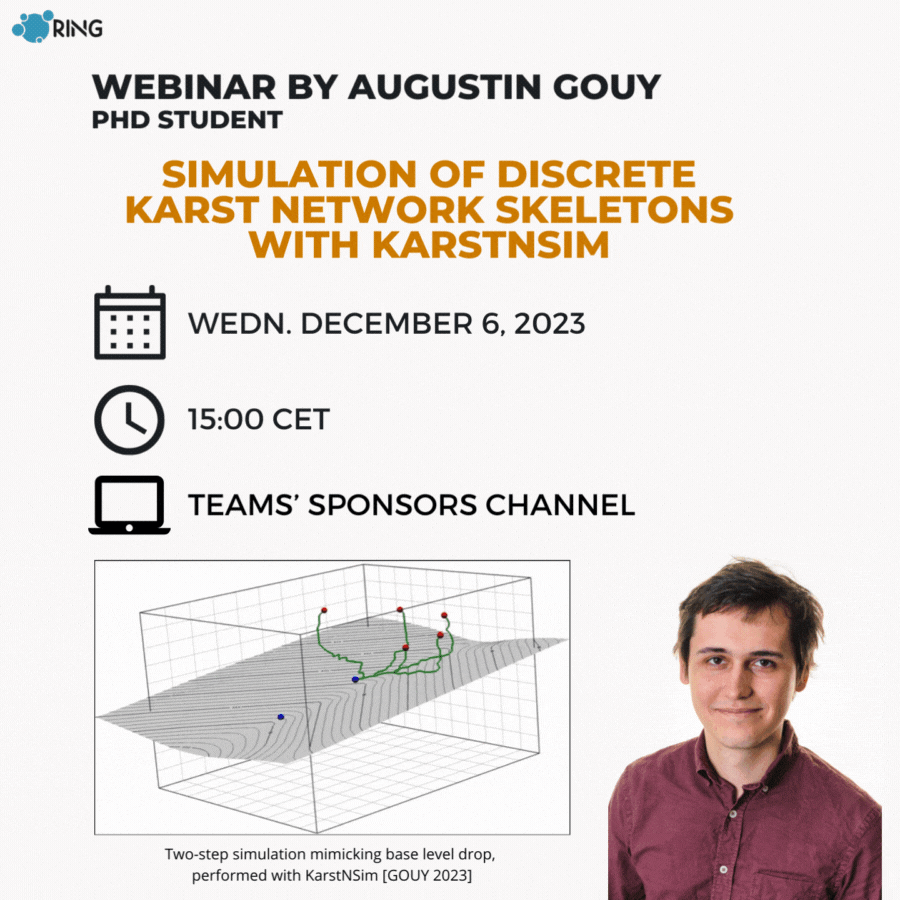
Photo credits: Julie Noury-Soyer
Abstract
In karst aquifers, the exact position and geometry of conduits is hard to determine. Stochastically simulating discrete karst networks permits to account for the uncertainties on conduit position and geometry. Among the existing methods proposed in the literature, only a few can reproduce realistic and diverse karst morphologies. We present a new approach, KarstNSim, for simulating discrete karst networks, that incorporates field data to generate a range of possible models. It solves a shortest path problem between sinks and springs – respectively the inlets and outlets of the network – with the use of an anisotropic cost function defined on an unstructured mesh conformal to geological and structural heterogeneities. This cost function represents the physico-chemical processes that govern speleogenesis – such as erosion and chemical weathering – providing simplified control over the morphometry of the generated networks. Our approach encompasses geological parameters such as inception surfaces, fractures, permeability, and solubility of layers. In this presentation, we will use a Skua-GOCADV19 plugin version of KarstNSim, which was developed with a comprehensive and documented interface. Using this plugin, various simulations will be performed on a synthetic model to demonstrate the influence of different input parameters on the spatial organization of past and present karst flows.
